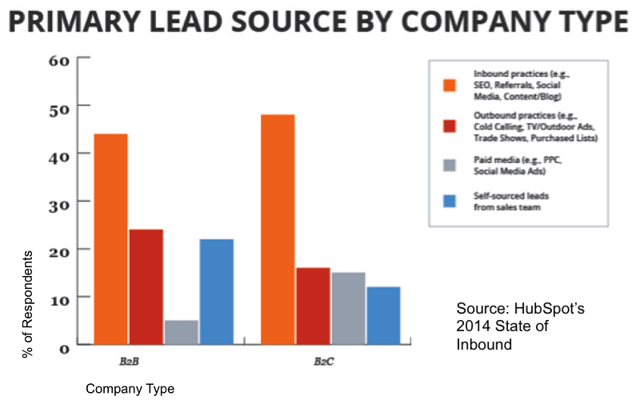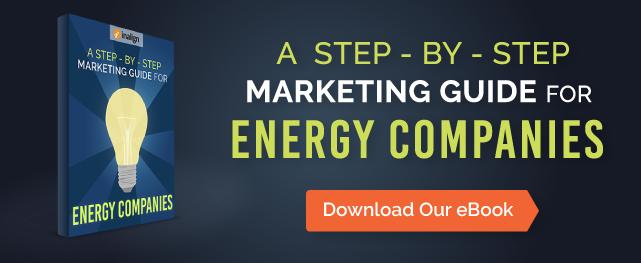
Marketers know the importance of measuring results from marketing activities. They also know how difficult it can be to measure the performance and ROI of traditional marketing practices such as TV, radio and print advertising.
Having worked for an advertising agency and having been a client who retained agencies, I can readily attest to the difficulties and frustrations of trying to assess which traditional marketing tactics were working and which weren’t working. Often, the decision to change marketing strategies was due more to a gut instinct rather than the analysis of true marketing metrics.
Inbound marketing, on the other hand, is a data-driven approach to marketing. It relies on marketing via the Internet where virtually everything can be tracked, measured and analyzed.
For retail energy marketers, traditional marketing is important since it can produce immediate results, help meet short-term sales and marketing goals, build brand awareness, and make consumers aware that they now have a choice in who supplies their electricity and natural gas.
Inbound marketing is also important to retail energy marketers since it focuses on building trust over time and converting prospects into long-lasting customers and promoters of your brand. Inbound marketing relies on providing better and more personalized user experiences throughout the buyer’s journey and after they become a customer. According to HubSpot, inbound marketing is the primary lead generator for both B2B and B2C companies.

So how can retail energy marketers leverage inbound marketing techniques and best practices to provide better results and actionable data from traditional marketing activities?
Here are some suggested steps (note – many of these steps are performed using Google Analytics and HubSpot’s all-in-one marketing software):
TV and Radio Advertising
TV and radio ads can be expensive and difficult to target to your buyer personas. Here's what you can do to make better decisions about your advertising investment and deliver better results:
- While it may seem obvious, your ad needs to be connected to your marketing goals. You’re paying for the ad so make sure it’s going to deliver the leads and customers you want.
- Each ad should focus on a single action you want your target audience to take. The action should be clear and specific.
- Measure performance and ROI. This isn’t the demographic and reach data the stations provide. You need to measure results against your actual marketing goals – how many leads and customers did these ads deliver? You can do this in several ways such as using a phone number in your ad that’s connected to a call tracking service and integrated with your website data, or directing viewers/listeners to go to a special landing page (e.g., YourSite.com/TV) that’s designed to complement your ad, capture lead information, and track visit, lead and customer metrics.
- When visitors from your ad become leads, usually by filling out a form on your landing page, you can then nurture them through the buying process with automated and personalized lead nurturing messages.
Print Ads
How many times have you seen an ad in a magazine or newspaper where the call-to-action was to go to the company’s website and, when you did, there was nothing there remotely related to the ad?
Print ads can be made more customer centric and measureable in a few easy steps:
- Make sure your ad is placed in publications that your target buyer persona subscribes to.
- Create a landing page on your website that uses the same visual and message as your print ad. This will help the reader to know they’ve arrived at the right place on your website.
- Your landing page includes a conversion form so visitors can become your leads.
- Create a simple URL for the landing page (e.g., YourSite.com/ad) and use the URL as the call-to-action in your print ad.
Also, if you use a phone number in your ad, make sure it’s part of a call tracking service that can be integrated with your website analytics. This way you can tell who called from your print ad and track them as they interact with you.
Direct Mail
Have you ever picked up the mail and tossed the direct mailers before reading them? Most of us have. That’s why direct mail is one of the most expensive forms of advertising from a cost per lead or cost per customer measurement.
If you do use direct mail and are curious about how effective it is in delivering leads and customers for your business, simply follow the same steps above for print ads.
Door-to-Door Sales
Some retail energy suppliers use door-to-door sales reps as a quick, efficient means of signing up new customers. If you outsource to an in-person sales and marketing company, you are probably receiving contact information and other useful data for your new customers.
But what else can or should you be doing with that information?
You can stay connected with your new customers and reduce customer turnover by adding your door-to-door sales data to CRM software that integrates with your website’s marketing platform. This will allow you to build customer retention campaigns that are specifically targeted to customers you have acquired through door-to-door sales.
Digital Advertising
Have you ever clicked on a paid ad and gone to the company’s homepage or worse, a site page that’s totally unrelated to the ad? You’re not alone. According to Unbounce, 98% of marketers are doing paid ads wrong!
And did you know that by making your digital ad and landing page relevant to your target searched keywords you can get a lower price and better ad position on Google? You can!
You can also track each of your digital ads by assigning tracking code to each ad. This will help you know which ads got the most click throughs and which ones delivered the most leads and customers.
Because digital ads reside on the Internet or in email, they are one of the easiest forms of advertising to track, measure and analyze. Why spend money on digital ads that aren’t delivering the leads and customers you expect? The answer: you don’t have to.
Trade Shows and Events
Trade shows and other events are a great way for retail energy suppliers to meet prospects. With the right set of questions, you can learn a lot about your prospects’ needs and determine what value you can provide them. Prospects that are interested in learning more about what you have to offer will usually be glad to give you their contact information. These are your event leads.
Too often, leads are never contacted after an event or, if they are contacted, it’s many weeks or months later. This is where inbound marketing techniques can help.
After the event, make an Excel list with the contact information for each lead and a column with the name of the event. This will help associate the lead with the event and allow you to personalize communications.
Upload your list into your CRM software, which can and should be integrated into your website marketing software. Next, determine which leads should be assigned to sales for phone call follow-up and which leads should be placed in an automated lead nurturing campaign. Lead nurturing campaigns can usually be created before each event and are designed to determine which leads are truly interested in what you have to offer and when they will be ready for a sales call.
By measuring each of these activities, you will be able to assess the effectiveness of each event in terms of lead generation, customer acquisition, the cost to acquire these customers and ROI.
Cold Calls
Who are the best prospects for a cold call? They’re the people who have already engaged with your company through your website or by opening an email.
But how do you know who those people are? Well, there’s an app for that. It’s call Sidekick for Business.
Sidekick integrates with both HubSpot and Salesforce. It lets you see which companies are visiting your website and provides detailed information about those companies, including company contacts. It also lets you know when someone is opening one of your emails. How powerful is that to your sales team?
Conclusion
Retail energy marketers no longer have to wonder about the effectiveness of their traditional advertising campaigns. By applying inbound marketing techniques and best practices, you can track, measure and analyze the performance and ROI for virtually every marketing activity. By arming yourself with this information, you can deliver better results for your marketing activities.








